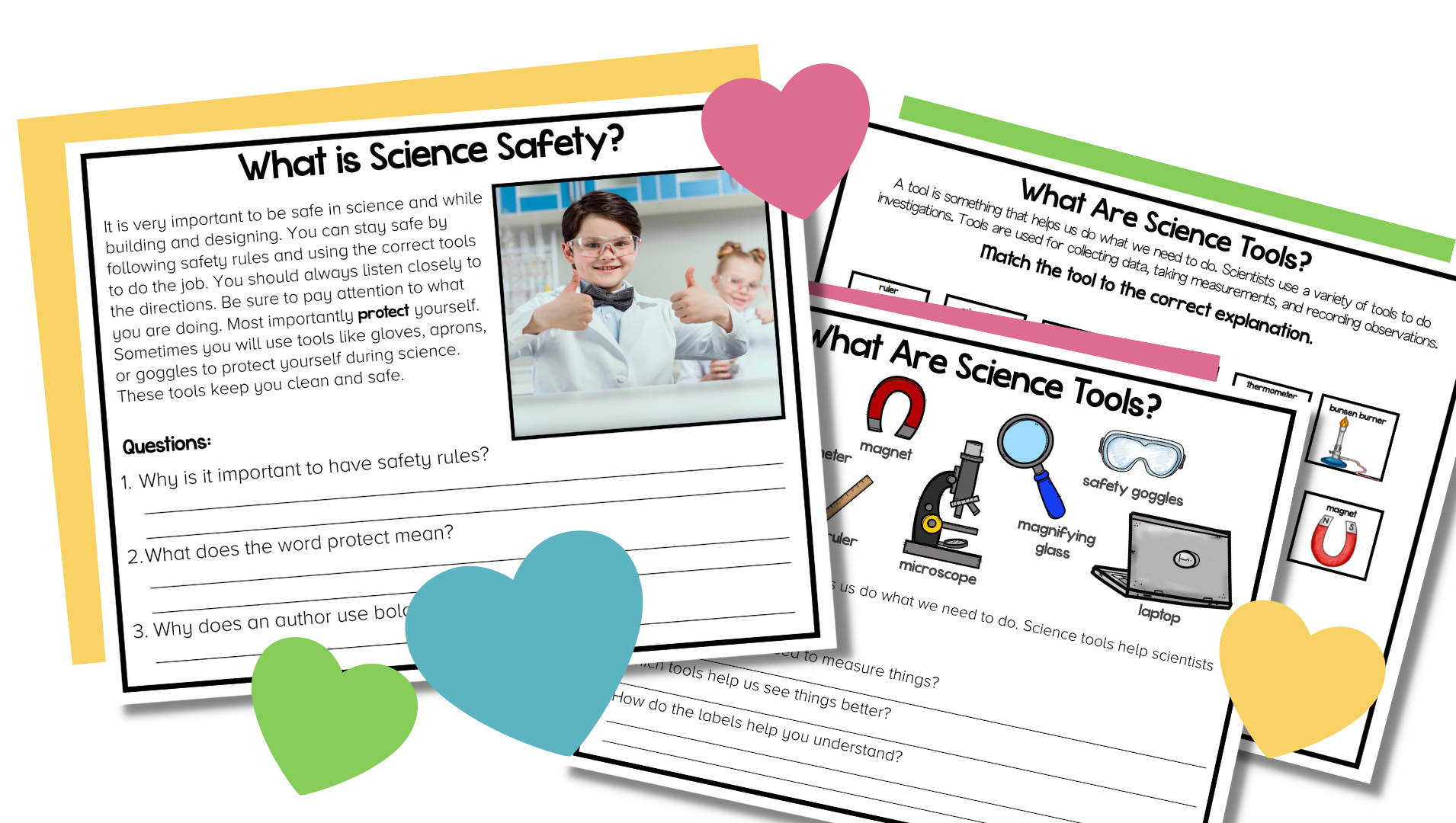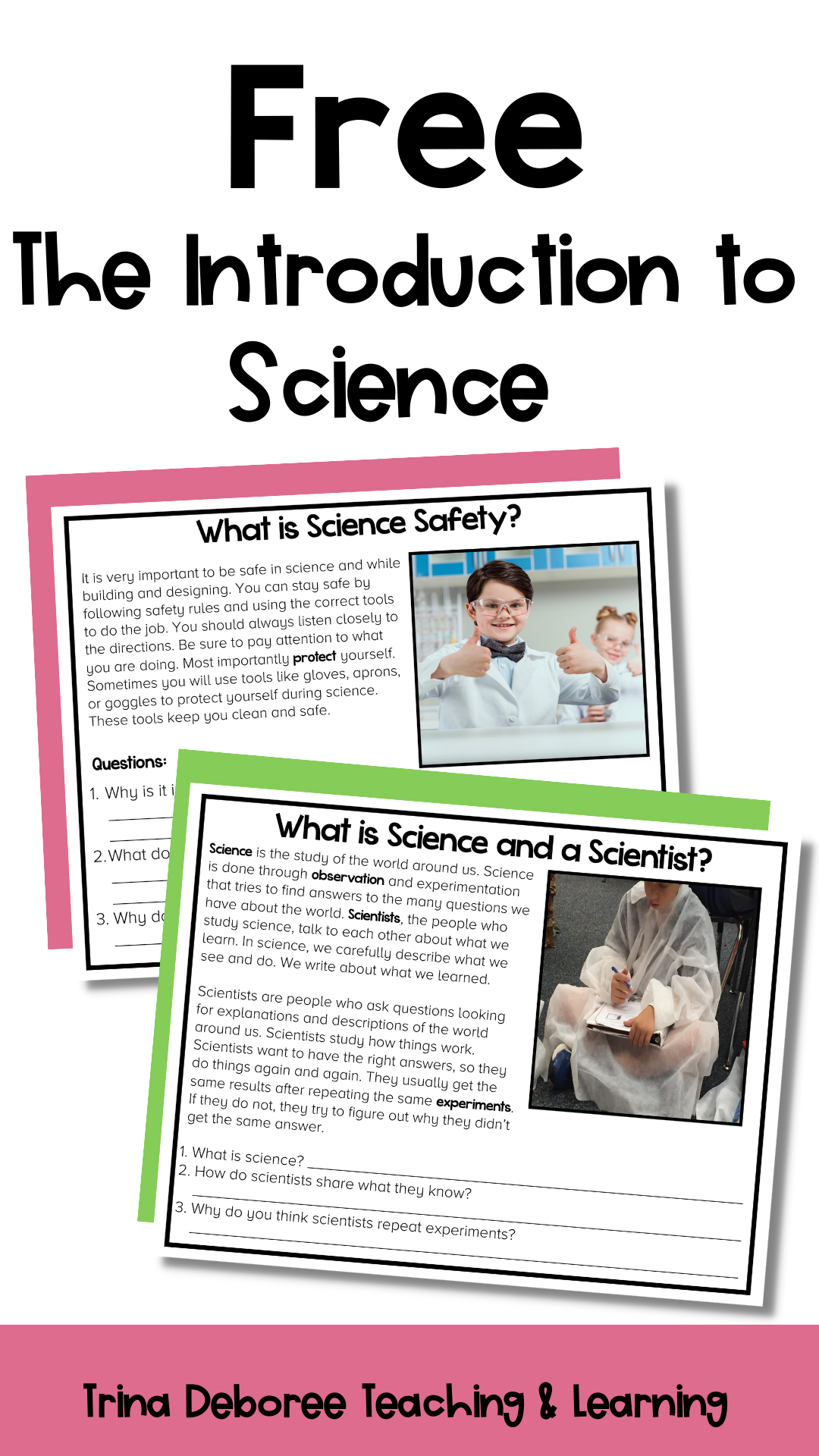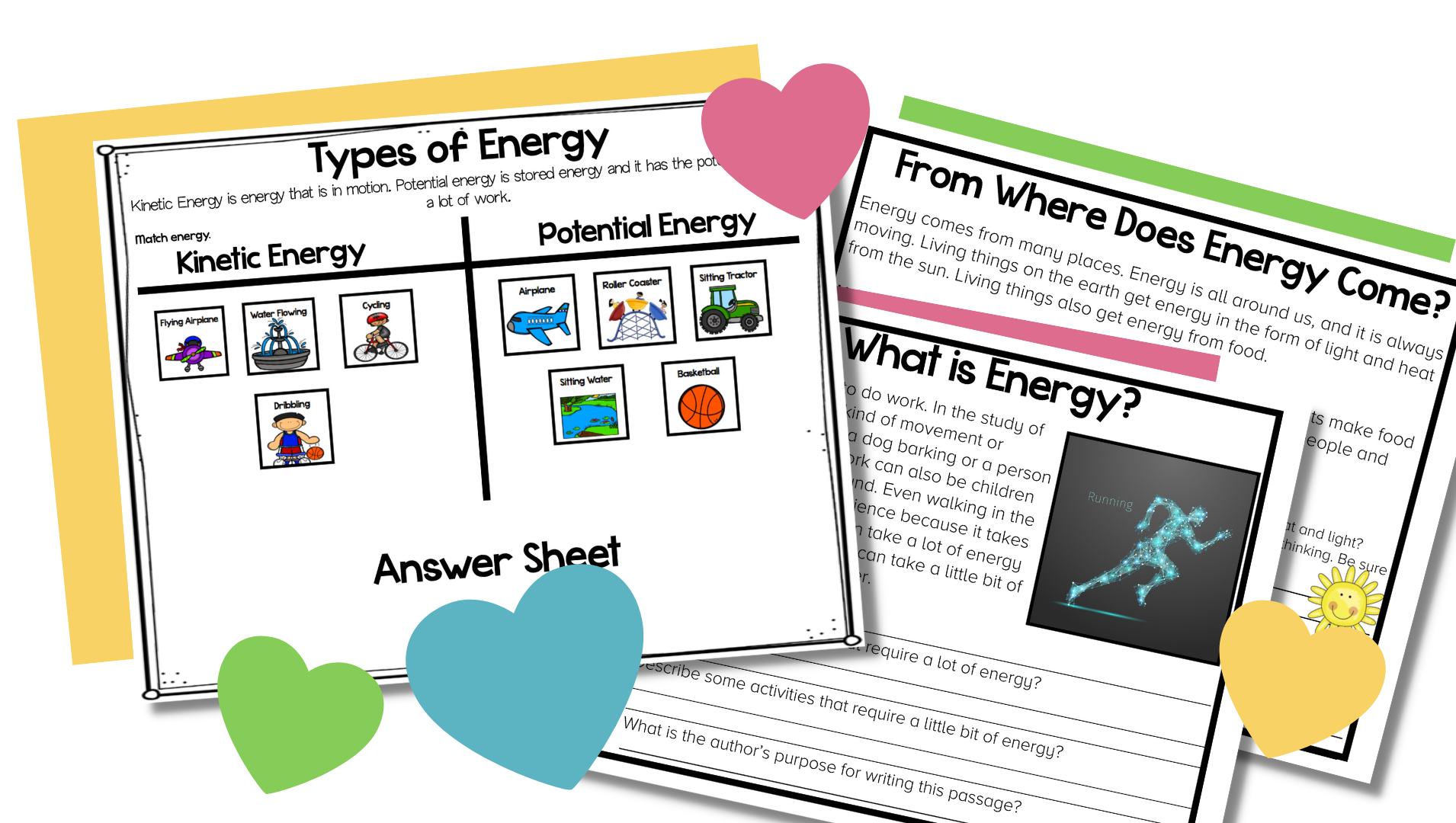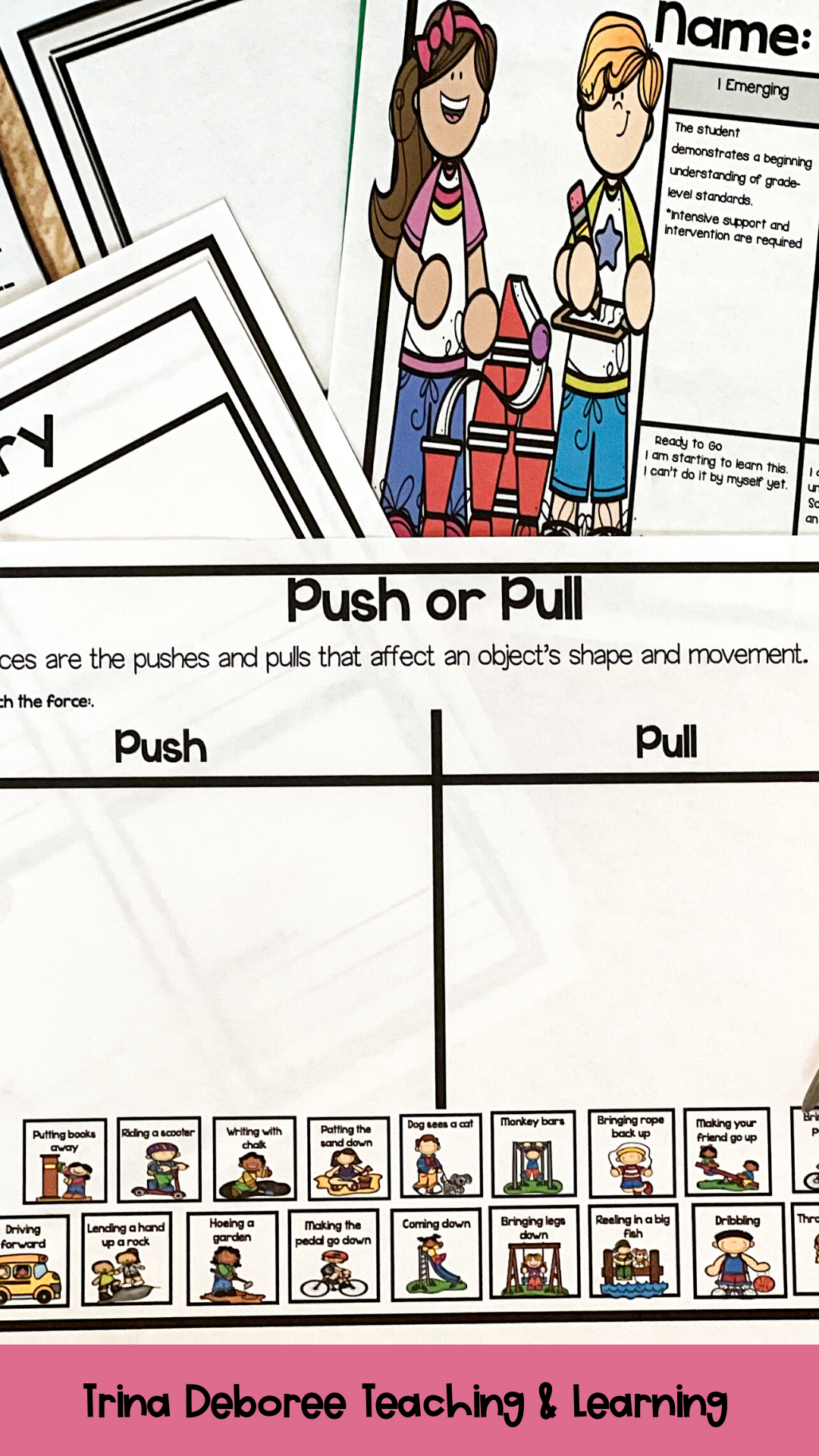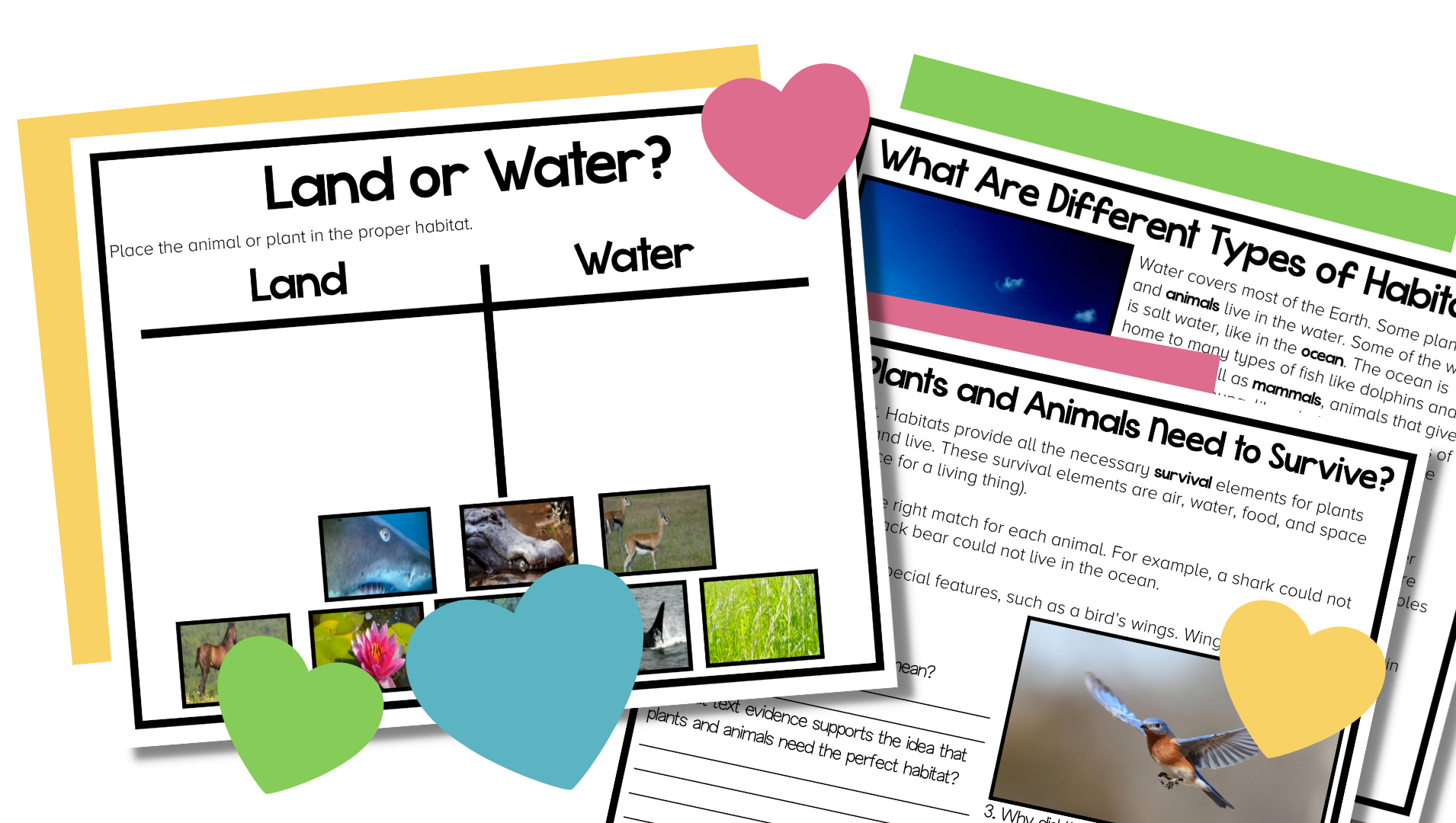OTT: 223 Efficiency in Education: 9 Topics for Saving Time by Merging Science and Reading Lesson
Are you tired of feeling like there aren't enough hours in the day to teach all the necessary subjects?
Do you find yourself wishing you could merge science and reading lessons to save time? Well, my friend, you're in luck. In this episode/blog post, we'll explore nine science topics and science units that can be integrated into your reading curriculum to make your teaching more efficient while covering information text standards and the Next Generation Science Standards.
Gone are the days of frantically trying to cram in both science and reading instruction before the final bell rings. By merging these two subjects, you will save precious time, and your students will benefit from a more comprehensive understanding of both areas by focusing on a specific science topic.
The Importance of Efficiency in Education
Efficiency is key in any educational setting, especially when teaching elementary students. It's no secret that children have shorter attention spans than adults, so it's essential to make the most of every minute in the classroom. That's why integrating science and reading can be a game-changer for both subjects.
By combining these two subject areas, elementary teachers can create a more immersive learning experience for their students. Science concepts become more tangible when presented through literature, while reading comprehension skills are strengthened when tied to scientific themes. Plus, this approach helps save time by allowing teachers to cover multiple topics simultaneously, killing two birds with one stone (not literally, of course). You can read or listen to more about the whole two birds, one stone idea here: OTT: 222: Two Birds, One Stone: Integrating Science into Your Reading Block.
In short, integrating science and reading in the elementary classroom is a win-win situation. Students get more engaged with their lessons and ultimately retain more information in both subjects.
Topic 1&2: An Introduction to Science and Engineering
Welcome to the wonderful world of science and engineering! Students are never too young for these subjects, but believe me, even the tiniest particles are excited to be studied by curious young minds. So, it's time to start exploring!
In small groups in your science classroom, kids will learn about everything from plants and animals to rocks and force and motion. Students will use their senses to observe, ask questions to investigate, and gather data to draw conclusions. Don't worry if they still need to learn all the answers - that makes science fun. It's a journey of discovery where every question leads us closer to understanding how things work.
Engineering is also essential to science because it helps students design solutions for real-world problems. Explore how engineers use creativity and critical thinking skills to build things like bridges, houses, or even toys!
This intro topic is the perfect way to integrate the next-generation science standards and reading into your second-grade classroom. It's also a great time to be a science teacher because kids love science!
Topic 3: Using Real-Life Examples to Teach Both Subjects With Forms of Energy
As science teachers, we know that teaching science content is crucial for our student's development. But did you know that incorporating literacy skills into our lessons can significantly impact their learning? That's right! Using real-life examples of different forms of energy, we can teach reading and science in the elementary classroom.
Let's take a look at some examples. When discussing potential energy, we can introduce the concept by showing how a rollercoaster stores potential energy at its highest point before releasing it to kinetic energy as it speeds down the track. This teaches scientific concepts and engages students in reading comprehension as they follow along with the narrative.
Topic 4: Incorporating Interactive Technology for Engaging Learning With
States of Matter
Are you tired of the same boring science lessons about states of matter? Do your students seem less than thrilled to learn about solids, liquids, and gases? Well, fear not, my fellow educators, because incorporating interactive technology is here to save the day!
Gone are the days of reading dry informational texts and watching stale videos. With interactive technology, students can actively engage with content area material. Imagine your class using virtual reality goggles to explore the properties of different states of matter or simulating a chemical reaction on an iPad. The possibilities for engaging learning experiences are endless!
But wait, there's more! Not only does incorporating interactive technology make learning fun and exciting for students, but it also allows teachers to track student progress and tailor their instruction accordingly. Plus, let's be honest, who doesn't love showing off some cool tech gadgets in class?
Another fun way of integrating technology is using States of Matter on Google Slides. You can even find a matter sort included!
Topic 5: Encouraging Collaborative Learning for Time-Saving Discussions With Force and Motion
Collaborative learning is a great way to encourage your students to work together and share their knowledge. By grouping them in pairs or small groups based on their grade levels, you can create an environment where they feel comfortable asking questions and sharing their ideas. Not only will this save time during discussions, but it will also help build communication skills necessary for future success.
Another helpful tool for collaborative learning is science notebooks. These notebooks allow students to record their observations, questions, hypotheses, experiments, and conclusions.
One science topic that kids love to discuss and investigate pushes and pulls or force and motion. Use Forces and Motion Passages and Questions for great discussions, science, and literacy instruction.
Topic 6: Integrating Cross-Curricular Projects for Efficient Use of Class Time With Rocks and Soil
As teachers, we're constantly on the lookout for ways to make the most of our limited classroom time. And what better way to do so than by incorporating cross-curricular projects into our lesson plans? Take rocks and soil, for example – they can be used to teach science concepts and provide ample opportunities for English language arts integration.
One idea for integrating literacy instruction into science is to have students create science journals to document their observations and findings about different rocks and soils. This project allows them to practice their scientific writing skills and a chance to showcase their creativity through illustrations and diagrams. And if you really want to amp up the language arts component, consider having students write short stories or poetry inspired by the rocks and soils they've studied.
Another option is to use rocks and soil as a springboard for language arts activities such as descriptive writing or persuasive speeches.
This resource is an excellent way for second-grade students to learn content knowledge and to provide strong prior knowledge for the hands-on portion of science class.
Topic 7: Weather and Climate
Teaching weather with a class discussion can be a fun way to teach weather and climate. With some disciplinary literacy and best practices, your students will soon be able to distinguish between a cumulus cloud and a cirrus one.
First things first, it's vital to incorporate interdisciplinary connections. For example, pairing science lessons with reading comprehension exercises allows students to build upon their knowledge of weather patterns while improving their language skills. This is what we call disciplinary literacy - using educational content to develop students' reading, writing, speaking, and listening abilities.
Next up: best practices! You should rely on something other than textbooks or videos to teach these concepts. Instead, try implementing hands-on activities such as creating homemade barometers or studying the water cycle through experiments. Incorporating technology such as interactive maps and virtual field trips can also help bring weather and climate alive for your students.
Topic 8: Habitats and Biomes
In today's fast-paced educational landscape, finding ways to save time and enhance learning efficiency is crucial. By merging science and reading lessons, educators can maximize their teaching efforts. One compelling topic for connecting these subjects is teaching habitats and biomes to 2nd graders. Here are three compelling reasons why this topic deserves a place in your curriculum:
Holistic Learning Experience: Teaching habitats and biomes provides a holistic learning experience that integrates multiple subjects, such as science and reading. By combining these lessons, students develop a comprehensive understanding of ecological concepts while simultaneously honing their reading skills. They can explore different habitats, read books and articles about various biomes, and engage in discussions and activities that reinforce both scientific knowledge and reading comprehension. This interdisciplinary approach saves time and promotes a deeper understanding of the subject matter.
Fostering Environmental Awareness: Introducing habitats and biomes to 2nd graders instills a sense of environmental awareness from an early age. By learning about different habitats, students begin to comprehend the delicate balance of ecosystems and the importance of preserving them. Reading materials focusing on conservation and environmental protection further deepens their understanding of their role as planet protectors. Through this integrated approach, children learn about habitats and biomes and develop a sense of responsibility toward the natural world around them.
Language Development and Vocabulary Expansion: Teaching habitats and biomes provide an excellent opportunity to enhance language development and expand students' vocabulary. As students engage in reading materials related to habitats, biomes, and the organisms that inhabit them, students encounter new words and phrases specific to these topics. This exposure to specialized vocabulary enriches their language skills, improves their reading comprehension, and expands their communication ability. Educators can optimize language learning outcomes by merging science and reading lessons while covering essential scientific concepts.
Topic 9: Streamlining Assessment Methods for Quick and Effective Feedback With Life Cycles
As Elementary school teachers, we know assessments are an inevitable part of our job. But let's face it; grading papers can be a real drag. That's why we must streamline our assessment methods for quick and effective feedback with life cycles in mind.
Gone are the days of endless stacks of graded papers cluttering your desk. Using standards-based assessments with resources allows you to focus on specific learning objectives and quickly determine if your students have met them. These evaluations provide clear and concise feedback to students and parents about their progress.
Science readers or science passages with questions are a great way to use instructional time and allow you to determine understanding with things like the main idea or how concepts connect while teaching students essential topics like life cycles. Utilizing the reading block gives students opportunities to embrace science topics, and then later in the day, students can participate in inquiry-based science instruction with hands-on activities.
But wait, there's more! Incorporating life cycle themes into your assessments can make learning even more engaging for your little ones. From studying the different stages of a butterfly or frog to exploring the growth process of a plant, incorporating real-life examples helps students connect with the material on a deeper level.
Related Blogs and Podcasts on Integrating Reading and Science:
OTT 221: Two Birds, One Stone: Integrating Science into Your Reading Block
OTT 209: It's Never Too Late: 11 Strategies to Get Students Excited About Science
OTT 201: How to Incorporate Christmas into Your Science Lesson: A Look Back
OTT 195: 5 easy ways to integrate art and science into your reading block
Conclusion: The Power of Merging Science and Reading Lessons for Efficient Teaching
In conclusion, merging science and reading lessons can provide second graders with an efficient and engaging teaching experience. Not only does it promote critical thinking skills and scientific inquiry, but it also enhances literacy skills such as comprehension and vocabulary development. Teachers can create a fun and memorable learning environment that encourages curiosity and exploration by incorporating hands-on experiments and real-world applications. So, let's ditch the separate silos of science and reading instruction and embrace the power of integration!




